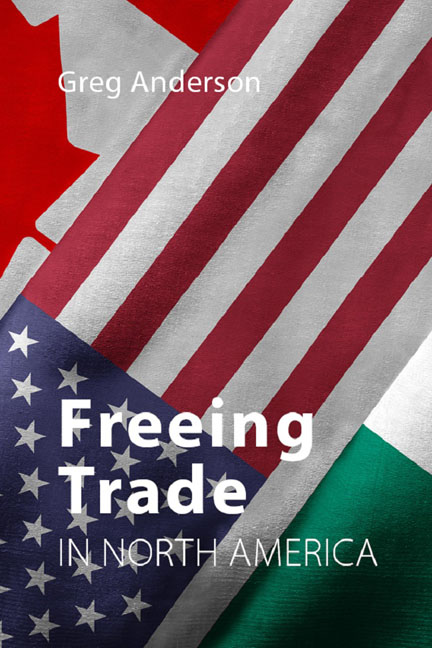Book contents
- Frontmatter
- Contents
- Introduction
- 1 The North American Idea
- 2 What the NAFTA is (and is not)
- 3 North America as Region
- 4 New Ground Broken and (Mixed?) Results
- 5 Much ado about Foreign Direct Investment
- 6 Governance in the NAFTA, or Lack Thereof?
- 7 Labour and the Environment
- 8 NAFTA 2.0: Did the Usmca Modernize Anything?
- Appendix 1 Spaghetti Bowl of Commitments by the 12 Trans-Pacific Partnership Signatories
- Appendix 2 US Trade in Goods and Services With NAFTA Partners, 1989–2017
- References
- Index
8 - NAFTA 2.0: Did the Usmca Modernize Anything?
Published online by Cambridge University Press: 24 August 2023
- Frontmatter
- Contents
- Introduction
- 1 The North American Idea
- 2 What the NAFTA is (and is not)
- 3 North America as Region
- 4 New Ground Broken and (Mixed?) Results
- 5 Much ado about Foreign Direct Investment
- 6 Governance in the NAFTA, or Lack Thereof?
- 7 Labour and the Environment
- 8 NAFTA 2.0: Did the Usmca Modernize Anything?
- Appendix 1 Spaghetti Bowl of Commitments by the 12 Trans-Pacific Partnership Signatories
- Appendix 2 US Trade in Goods and Services With NAFTA Partners, 1989–2017
- References
- Index
Summary
After nearly three decades of the NAFTA as a political “piñata for pandering pundits and politicians”, what has changed with the agreement’s “modernization” in the form of the United States–Mexico–Canada Agreement (Pastor 2011: ch. 1)? Much like the incessant debates about the merits of the NAFTA itself, one’s assessment of the USMCA, or the way in which it came into being, depends on your point of view. If the NAFTA was indeed the “worst agreement ever negotiated”, as President Trump frequently opined, or one is fundamentally opposed to trade liberalization, then renegotiation and replacement with the USMCA are not a positive outcome. If genuine “modernization” of the NAFTA was one’s goal, and by “modernization” one hoped to deepen trilateralism through greater cooperation, liberalization and institutionalization, the USMCA will also disappoint. Finally, there were also those who recognized the political potency of contemporary anti-trade populism and hoped simply to maintain the status quo.
Of the three camps, those hoping to preserve the “status quo” have the most to cheer about. The NAFTA was not formally scrapped, as the Trump administration had initially threatened. Moreover, the USMCA effectively updates the NAFTA by including topics and disciplines not considered in 1994, a number of which were the subject of the NAFTA’s never completed built- in agenda. Table 8.1 comparatively lists the table of contents, or topics, for the NAFTA, the Trans-Pacific Partnership (prior to US withdrawal) and the USMCA. There are certainly major differences between the NAFTA and the USMCA: 34 core chapters in the USMCA (not including annexes and side letters), compared with just 21 for the NAFTA. Even when topics covered mirror each other, such as chapter 4’s rules of origin, the USMCA text is several orders longer than the original NAFTA; however, as noted elsewhere in this volume, the extra length is not necessarily an improvement.
However, what is abundantly clear is that the genetic material of the USMCA can be traced to the NAFTA’s architecture. Although the NAFTA itself proved hard to update, amend or complete via its many working groups, trade negotiators from all three NAFTA countries continued building upon the foundation put in place by the NAFTA in other negotiations.
- Type
- Chapter
- Information
- Freeing Trade in North America , pp. 155 - 164Publisher: Agenda PublishingPrint publication year: 2019



